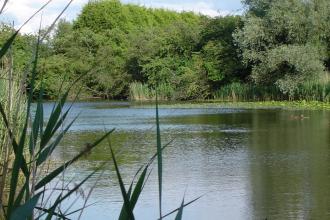Lincolnshire Wildlife Trust
Lincolnshire Wildlife Trust
Lincolnshire Wildlife Trust
Moulton Marsh
Location
Know before you go
Dogs
Assistance dogs only
When to visit
Opening times
Open at all timesBest time to visit
April to AugustAbout the reserve
The long narrow stretch of the reserve is entirely man-made, mostly as a result of soil extraction when the sea bank was raised in 1981. The woodland adjacent to the car park used to be a refuse tip, this was planted with a variety of broadleaf trees over a 10 year period. This area covers six hectares (15 acres). Upstream (west) of this area are two large lagoons with islands, and adjacent to the river are shallow tidal scrapes. Beyond this is an area of saltmarsh and creeks. This whole area totals 14 hectares (35 acres). Beyond that are some 16 hectares (40 acres) of saltmarsh.
The maturing woodland now holds a good population of tits and finches, while the scrub areas are habitat for whitethroats and buntings. The lagoons are an important wintering area for little grebe and water rail in winter. Redshank and little egret are regularly seen on the scrapes. The flood protection bank alongside the reserve has a variety of wildflowers, including pyramidal orchid, and attracts butterflies and other insects. Strawberry clover and sea-milkwort occur on the reserve.
The water levels in the lagoons and scrapes are controlled by a valve and pipe system. These saline lagoons are a scarce habitat despite having only a few species which are nationally rare. The lagoons can only be viewed from the flood protection bank for safety reasons.
Nearest postcode PE12 6LL. Please note - postcodes are for the nearest registered address as we are unable to get postcodes for nature reserves.



